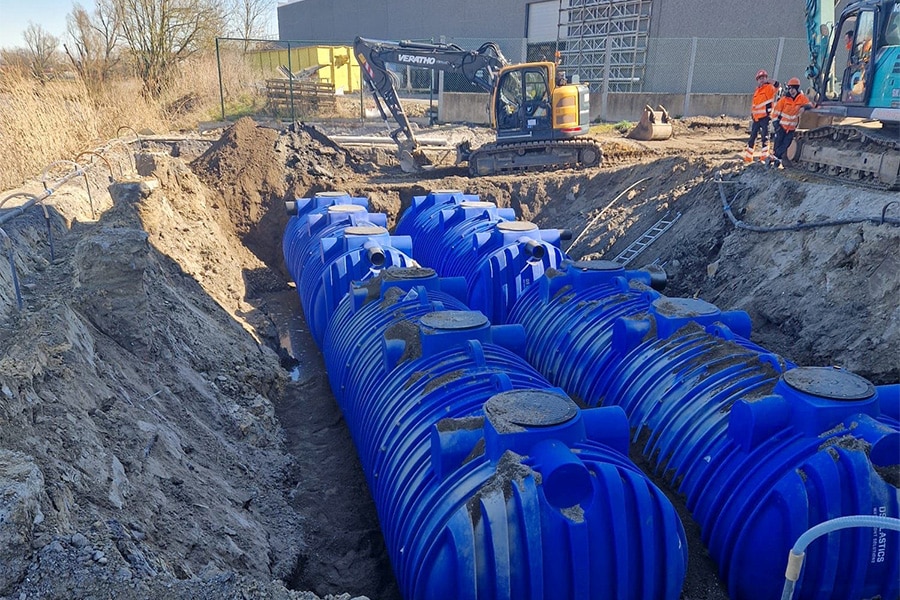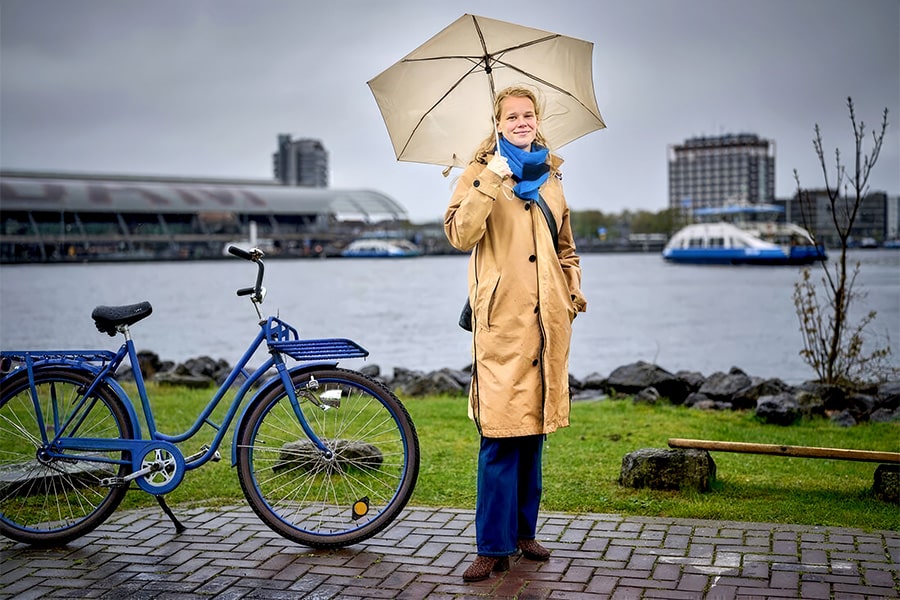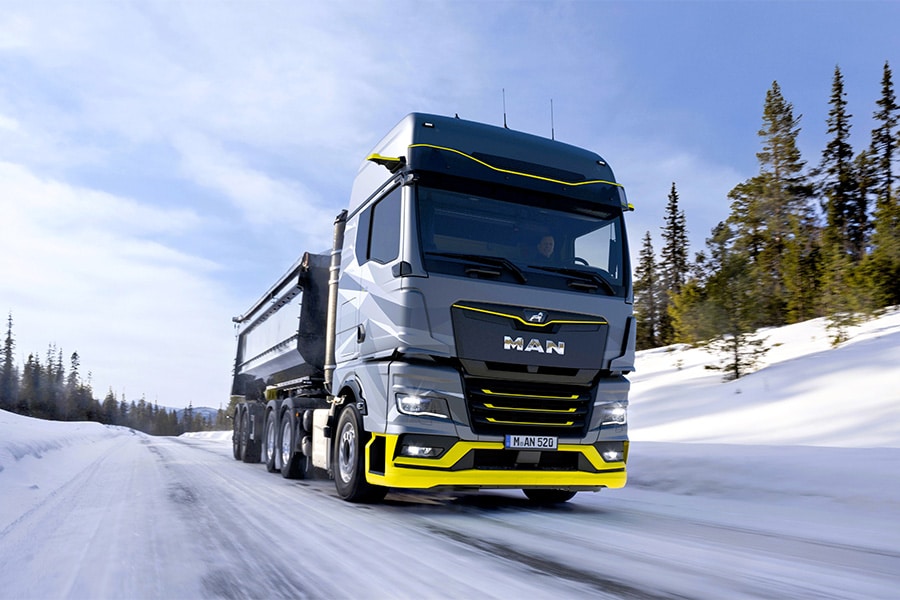
World first for MAN with hTGX - Front series available at the end of this year
With the hTGX, MAN is the first manufacturer to introduce a truck with a hydrogen combustion engine. This emission-free tractor represents an interesting addition to the zero emission product portfolio. The concept fits in perfectly with heavy applications in, for example, construction/infra, ECO-Combi (LHV), hazardous goods (ADR), tanker transport or heavy transport. A real powerhouse!
The hTGX hydrogen truck is 100% MAN: reliable quality, innovative and efficient. Equipped with an in-house developed hydrogen combustion engine and hydrogen tanks, the truck 100% meets the zero emission standard. With this introduction, MAN is taking the next step in sustainability. "MAN believes that the hTGX is complementary to our eTruck, which will determine the majority of production in the future," says Jacobjan Vermeiden, Manager Transport Solutions at MAN Truck & Bus BV. "Especially from the construction corner, there is a lot of interest and the first orders have already been written out as well." For example, De Jong Zuurmond was the first to order the first two H2 tractors and contractor Jos Scholman signed up for as many as six hydrogen trucks.
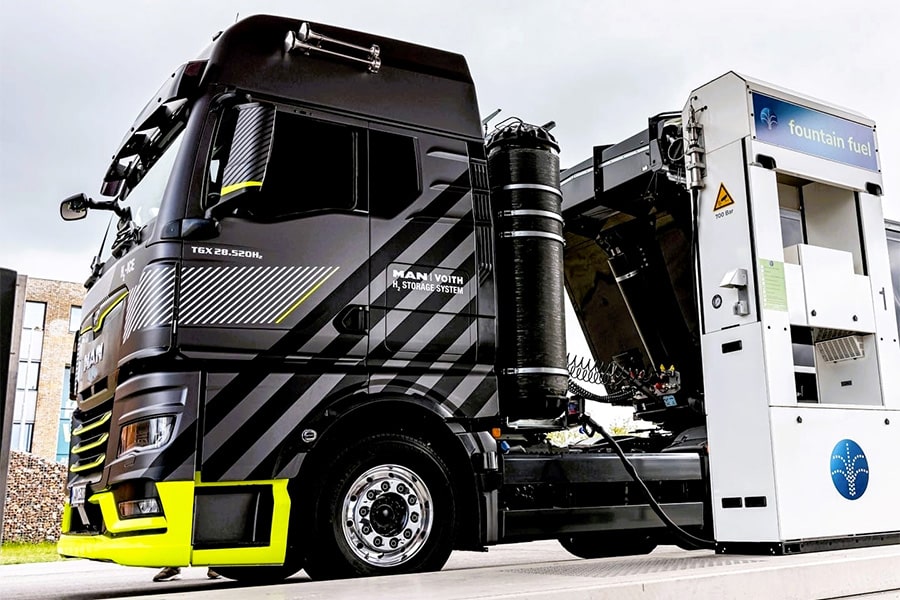
Beating heart
The powerful H45 hydrogen engine is the beating heart of the hTGX. The power source is derived from the D38 self-igniter, which has been boosted from 15.2 to 16.8 liters. With 383 kW/520 hp of power and up to 2,500 Nm of torque, there is always plenty of pulling power available. The engine block is connected to a familiar MAN TipMatic DirectDrive automatic transmission with retarder. The use of already proven technology allows MAN to enter the market at an early stage. Behind the cab is a Voith hydrogen module, consisting of four tanks with a total storage capacity of 56 kg. Assuming an average consumption of 9 kg H2 per 100 km, the range on a full tank is about 600 km. At a pressure of 700 bar, the truck can be fully refueled in 10 to 15 minutes.

Interest in the MAN hTGX is high, Jacobjan assures us. Many transport companies see something in the hydrogen truck because of its long range and favorable weight compared to an electric truck. "Since each battery pack weighs about 700 kg, that easily makes a difference of 2.5 tons," sounds firm. "The higher payload proves an interesting fact for special applications in construction, tank and heavy transport. In addition, the hydrogen system requires less installation space on the chassis, something that quickly leads to problems, especially with electrically driven 4- or 5-axle trucks. Especially for tippers, concrete mixers and in heavy transport, H2 offers a solution compared to electric, since those vehicles have a significantly higher energy consumption."
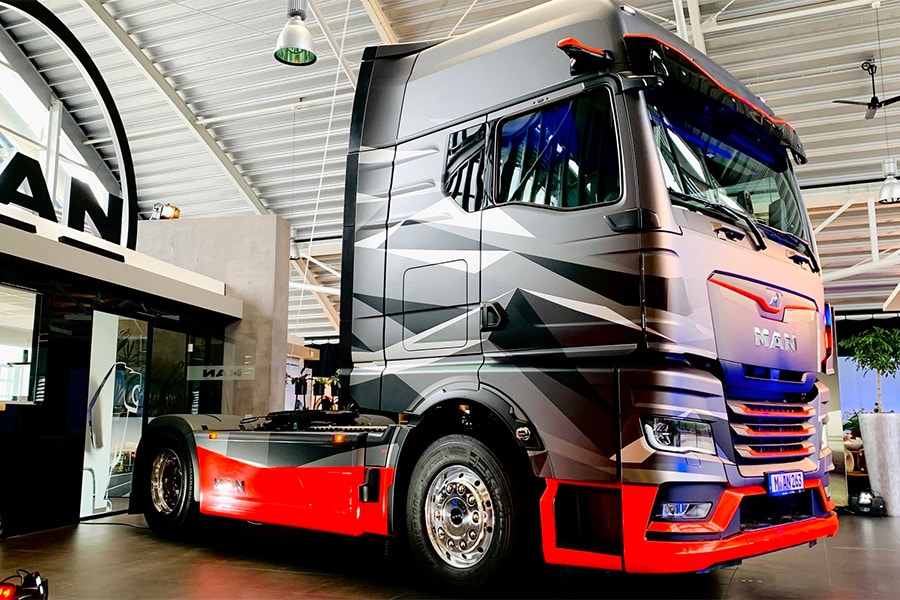
Three configurations
Whereas the eTGX is mainly delivered as a 4×2 tractor unit and 4×2 or 6×2 rigid truck, the hTGX appears initially as a tractor unit in three axle configurations: 6×2-2 with liftable double-axle trailing axle, 6×2-4 with single-axle steered and liftable trailing axle and 6×4 tractor unit. The latter two are interesting for the Netherlands, with a GVW of at least 65 tons. One drawback is that the 6×2-4 variant, with a length of 7,175 mm, is actually a bit too long, although it runs just as short as the 4×2. MAN's eTruck, on the other hand, is known as the most compact in the market, making it easy to maneuver and optimizing the front axle load. In terms of zero emissions, MAN has a long history. The first electrically powered MAN bus dates back to 1933, and the first BEV truck was introduced in 1979.

The eTGX features proprietary battery technology with a unique cell chemistry that combines the advantages of NMC and LFP batteries. This results in a high energy and power density. In chassis construction, three to six packs can be installed, good for 240 to 480 kWh of net battery capacity. In e-tractors, this involves four to six packs (320-480 kWh). A CCS fast-charge connection is provided as standard on both sides of the vehicle. Recharging is possible at speeds of up to 375 kW/800 volts. From October 2025, MAN will also supply an MCS connection for MegaWatt charging up to 750 kW. The German manufacturer expects e-trucks to account for almost three-quarters of future sales. What about fuel cell technology? "That's still a while away," Jacobjan knows, "I don't expect the H2 FCEV until 2030 at the earliest."
